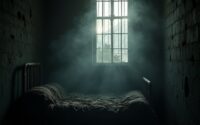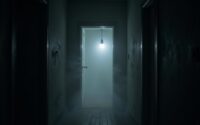The Poltergeist of Rosenheim: Germany’s Case
In 1967, a Bavarian law office became the epicenter of Germany’s most documented paranormal case. Phones dialed themselves, light bulbs exploded without warning, and electrical systems went haywire—all defying logical explanation. Scientists, engineers, and parapsychologists couldn’t identify any mechanical causes. The disturbances mysteriously intensified whenever nineteen-year-old secretary Annemarie Schneider was present. What they discovered would challenge everything investigators thought they knew about the physical world.
Introduction

When unexplained phenomena struck a Bavarian law office in 1967, what began as routine electrical malfunctions quickly escalated into one of the most documented poltergeist cases in paranormal history. The disturbances at Sigmund Adam’s law firm in Rosenheim, Germany, attracted scientists, engineers, and parapsychologists who’d witness events that defied conventional explanation.
Over several months, the office experienced bizarre electrical anomalies, spontaneous phone calls, swinging light fixtures, and rotating pictures. These incidents weren’t isolated occurrences but systematic disruptions that paralyzed daily operations. Police investigators, telephone company technicians, and physicists from the Max Planck Institute conducted extensive investigations. Their findings challenged scientific understanding when they couldn’t identify any technical causes. The case’s significance lies in its thorough documentation by credible witnesses and the methodical approach taken to rule out fraud or natural explanations.
967 Bavarian Law Office
The law office of Sigmund Adam operated from a modest building at Königstraße 13 in Rosenheim’s commercial district. Adam’s practice handled routine legal matters for local clients, employing a small staff that included clerks, a secretary, and a nineteen-year-old assistant named Annemarie Schneider.
The office’s unremarkable nature changed dramatically in late 1967. What began as minor electrical malfunctions escalated into extraordinary disruptions. Light bulbs exploded without warning, telephones rang simultaneously despite disconnected lines, and the billing system recorded hundreds of phantom calls to the speaking clock. Furniture moved across rooms, filing cabinets opened spontaneously, and pictures rotated on walls.
These phenomena didn’t occur randomly throughout the building. Staff members noticed the disturbances intensified in Schneider’s presence and ceased during her absences, establishing a pattern that would become central to the investigation.
Notable Cases or Sightings

Beyond Rosenheim’s law office, paranormal investigators have documented similar poltergeist manifestations across Germany and Europe, though few matched the intensity and documentation level of the 1967 case. The Enfield Poltergeist in London (1977-1979) exhibited comparable phenomena, including furniture movement and knocking sounds that researchers couldn’t explain. Germany’s Haunting of Hopfgarten (1921) involved stones mysteriously appearing inside locked rooms, while France’s Tina Resch case (1984) featured spontaneous electrical disturbances resembling Rosenheim’s events.
Investigators noted striking patterns across these cases: young individuals present during manifestations, unexplained electrical anomalies, and objects moving without physical contact. The Munich Institute recorded seventeen similar German cases between 1950 and 1980, though none attracted Rosenheim’s media attention. These incidents typically lasted weeks to months before ceasing abruptly, leaving investigators without definitive explanations for the documented phenomena.
Common Theories or Explanations
Scientists and paranormal researchers have proposed several competing explanations for the Rosenheim phenomena, ranging from fraud to unconscious psychokinesis. Skeptics argue that Anne-Marie Schaberl, the 19-year-old secretary at the center of events, deliberately manipulated objects and electrical systems through conventional means. They’ve suggested she used threads, magnets, or accomplices to create the disturbances.
Parapsychologists counter with the recurrent spontaneous psychokinesis (RSPK) theory, proposing that Schaberl’s emotional stress unconsciously triggered the phenomena. This explanation links poltergeist activity to psychological tension in adolescents. Technical experts who investigated couldn’t identify mechanical causes for the electrical anomalies, including physicist Friedbert Karger from the Max Planck Institute. Some theorists propose electromagnetic interference or seismic activity, though these don’t account for all documented incidents.
Frequently Asked Questions
What Happened to Annemarie Schneider After Leaving the Law Office?
After leaving the law office, Annemarie Schneider married and moved away from Rosenheim. The paranormal phenomena that’d plagued the office completely stopped following her departure, and she reportedly experienced no further poltergeist activity in her life.
How Much Did the Poltergeist Activity Cost in Damages?
The poltergeist activity at the Rosenheim law office didn’t have a specific documented total for damages, though it caused significant financial losses through destroyed light bulbs, massive phone bills, and disrupted electrical equipment throughout 1967-1968.
Did Similar Phenomena Occur at Other Locations Schneider Worked?
Yes, similar paranormal phenomena reportedly followed Annemarie Schneider to her next workplace. Electrical disturbances and unexplained events occurred at her subsequent job, though they weren’t as intense or well-documented as the Rosenheim incidents.
What Specific Recording Equipment Did Investigators Use During Their Research?
Investigators used oscillographs to monitor electrical fluctuations, tape recorders to capture unexplained sounds, and cameras to document physical movements. They’d also installed automatic recording devices on phone lines to track the mysterious dialing incidents.
Have Any Documentaries or Films Been Made About This Case?
Yes, several documentaries have covered the case, including German television productions from the 1960s and later features. The BBC’s “Leap in the Dark” series examined it, and it’s appeared in various paranormal investigation programs internationally.


